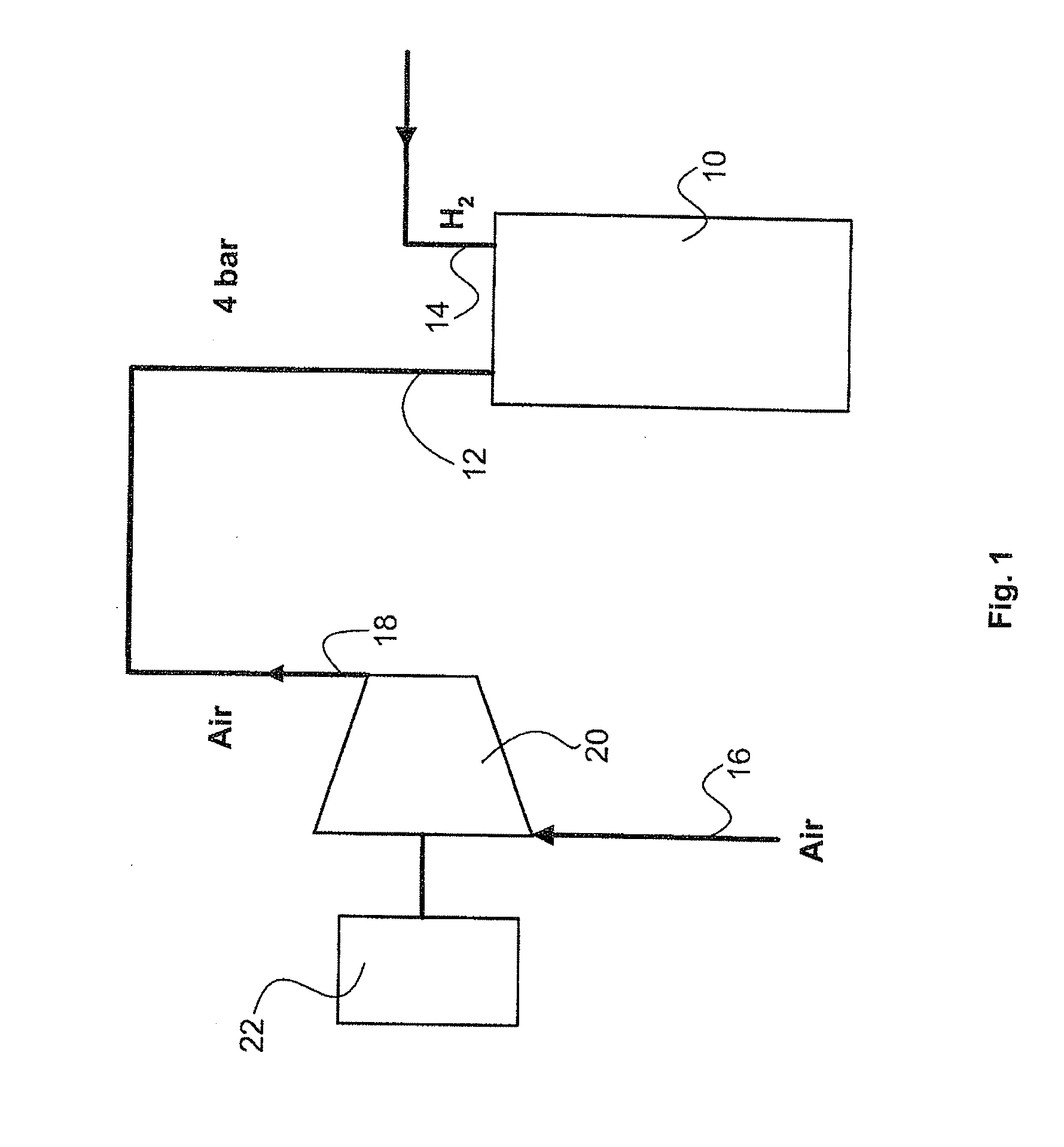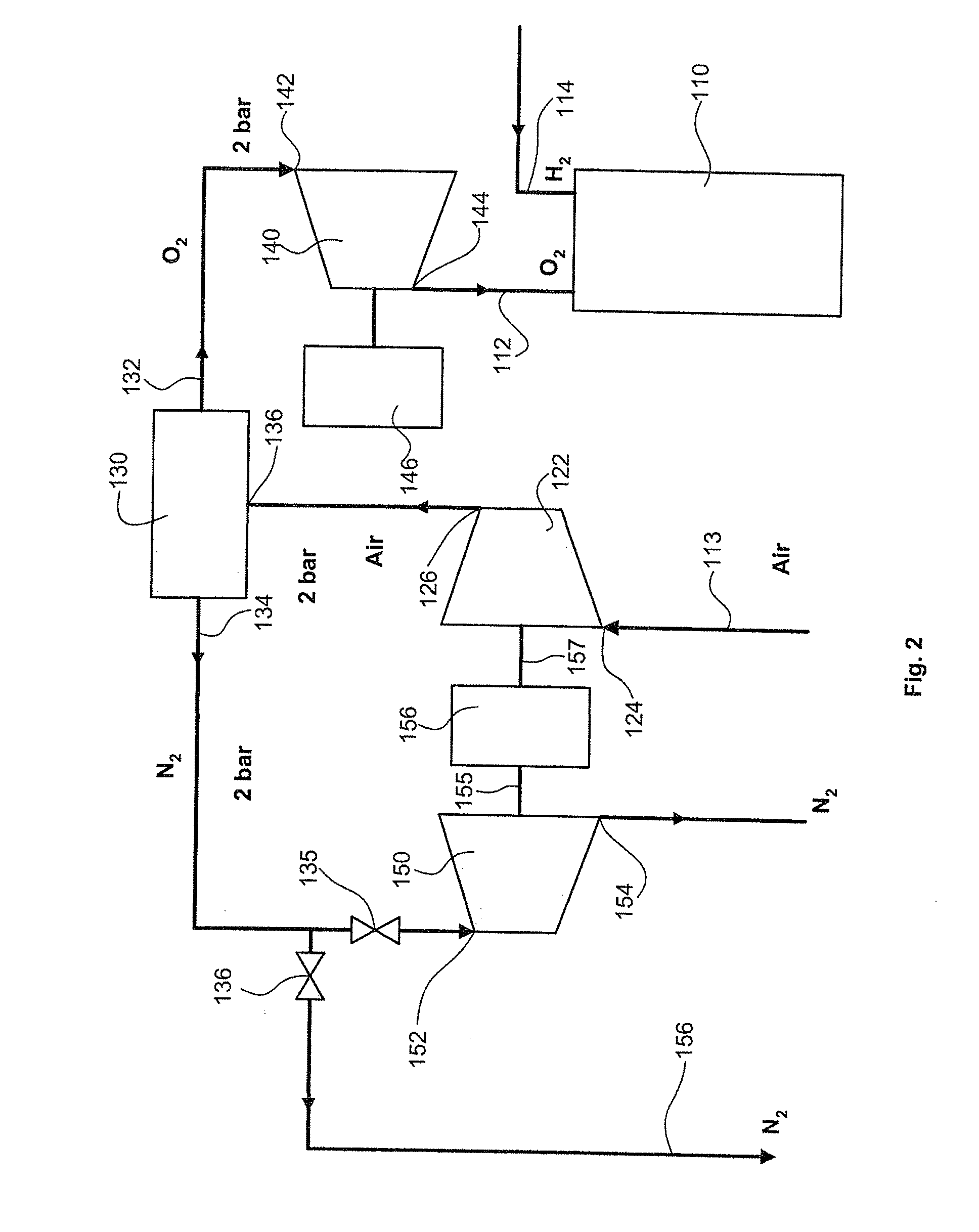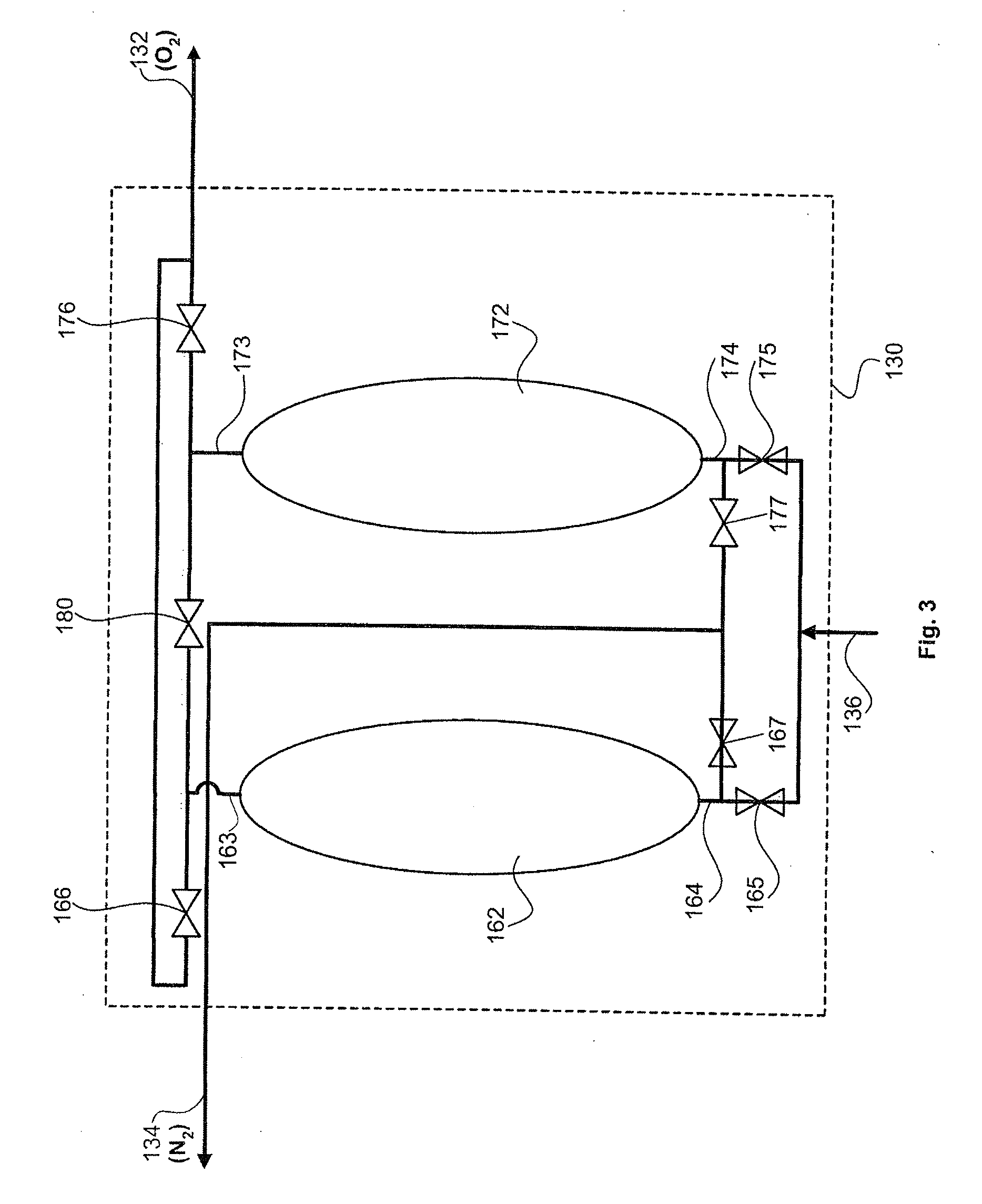Electric power pack that includes a fuel cell
a fuel cell and electric power pack technology, applied in the field of fuel cells, can solve the problems of poor cell efficiency, high cost, and high cost of fuel cells, and achieve the effect of high level of autonomy
- Summary
- Abstract
- Description
- Claims
- Application Information
AI Technical Summary
Benefits of technology
Problems solved by technology
Method used
Image
Examples
examples
[0048]A supply system according to the invention, given as an example for a 30 kW fuel cell, comprises a stack of 107 individual cell elements each comprising a solid electrolyte polymer membrane with a thickness of about 50 microns and an area of 300 cm2. The cell elements can operate at a temperature of 70° C. at a pressure of 4 bar absolute in order to deliver power of about 280 watts at a current of 360 amps. For this power, the fuel cell requires 269 liters of hydrogen per minute and 135 liters of oxygen per minute. In fact, the oxygen flow rate in this example is 155 liters per minute, i.e. about 15% higher than the theoretical requirement. The operating factors specific to the construction of the fuel cell and to the other functions of the oxidizer gas stream, which were mentioned previously in regard to FIG. 1, explain this difference.
[0049]It was seen that the oxygen carrier gas was delivered to the inlet 112 of the fuel cell at a pressure of 4 bar absolute by the high-pres...
PUM
| Property | Measurement | Unit |
|---|---|---|
| pressure | aaaaa | aaaaa |
| pressure | aaaaa | aaaaa |
| inlet pressure | aaaaa | aaaaa |
Abstract
Description
Claims
Application Information
 Login to View More
Login to View More - R&D
- Intellectual Property
- Life Sciences
- Materials
- Tech Scout
- Unparalleled Data Quality
- Higher Quality Content
- 60% Fewer Hallucinations
Browse by: Latest US Patents, China's latest patents, Technical Efficacy Thesaurus, Application Domain, Technology Topic, Popular Technical Reports.
© 2025 PatSnap. All rights reserved.Legal|Privacy policy|Modern Slavery Act Transparency Statement|Sitemap|About US| Contact US: help@patsnap.com



